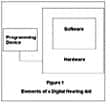Have you ever considered the impact that owning your own office building could have on your personal financial future? Regardless of what profession you are in (hearing instrument specialist, audiologist or a similar private practice situation), in the end what one has is a business. As such, there are always business decisions to be made in the efficient running of that office, and many of these decisions have a direct impact on your personal finances.
Most of us involved in hearing health care do not have a degree in business management. Whatever the business, trial and error flavored with advice from those whom you respect is the norm. Business managers are acutely aware of the effects that decisions regarding personnel, advertising, insurance coverage, being affiliated with a buying/marketing group, etc., can have. The learning curve can be extremely steep, but those who make good decisions most of the time will have successful enterprises.
One aspect of finances that hearing care professionals may not have given much thought to is the financial cost and reward of owning the office building in which the hearing care practice is located. As business owners, we usually consider paying rent a normal cost of doing business, similar to the cost of telephones or electricity. We wish it were less, but we are resigned to paying it. Have you ever seriously considered owning your own office location? Like anything else in business, there is a steep learning curve in purchasing a commercial office building, but being your own landlord can have some real advantages and financial rewards.
Many professional offices are in locations that would not allow you to own your own location, such as a clinic in a hospital or medical office, or a location in a major mall or neighborhood shopping center. But maybe you could do just as well in another location not far away, or perhaps your present landlord is reappraising his finances and would entertain an offer on your current location.
Many buildings can be found that are compatible with the needs of hearing care professionals, such as a strip of individual retail/office-zoned buildings or, better yet, a stand-alone building. Frequently, there are buildings available that only a commercial real estate agent would know about. And don’t rule out that eyesore down the street; in some cases, an inexpensive architectural treatment can do wonders. (On this point I speak from experience: I converted an unoccupied warehouse into a southwestern-style, 2200-sq.-ft. office with its own private parking lot.)
Buying vs. Renting
Has your business outgrown its current location? Is your lease coming up for renewal? Has the neighborhood changed? Has your style of business changed? Or, is the city going to tear down your present location and widen the street? If your answer is yes to any of these questions and you have an established hearing care business, you may wish to consider the purchase of your present location or another one nearby.
| Rented Location | Owned Location | Difference (Rented -Owned) |
|
| Square feet | 1500 | 1500 | |
| Rent per square foot | $12.00 + $2.50 triple net | $17.60 all inclusive | +$3.10/sq. ft |
| Rent per month | $1,812.50 | $2,200 | +$387.50/mo |
| Rent/mortgage per year | $21,750 | $28,800 | +$6,250/yr |
| Purchase price | $200,000 | ||
| Mortgage rate | 10.5% | ||
| Down payment | $25,000 (12.5%) | ||
| Rent you pay yourself | $2,200 | ||
| PITI+* – w/ a $175,000 20 yr. 10.5% mortgage (2% over prime) | $2,100 per month | ||
| Approx. cost per month in 28% tax bracket, including depreciation | $1,330 | $1,392.00 | +$64.00 |
| Rent cost over 20 years in 28% tax bracket | $319,200 | $362,880 | +$15,360 |
| Approximate tax savings on $100 rent paid to yourself over actual costs | $100/yr | -$100/yr | |
| For the sake of simplicity, the information above makes the following assumptions: 1. The monthly rent at your current location never increases over 20 years. 2. The triple net costs (insurance, taxes, and maintenance) never increase. 3. The interest rate you pay on the purchase of the building never changes. Many commercial mortgages use a floating rate that changes yearly based on the then-current prime rate. 4. You remain in the 28% tax bracket. The higher your tax bracket, the greater your savings from owning your own building. 5. Your business is incorporated, you own the building as a personal asset and you lease the building to your business. * PITI+=Principle, Interest, Taxes, Insurance + Maintenance |
|||
| Table 1. Comparison of renting a 1500-sq.-ft. office space as opposed to owning the space. | |||
Table 1 offers an example and comparison of the financial reward that might be possible by becoming your business’ landlord. This example assumes you are renting a 1500-sq.-ft. office for $12.50 per sq.-ft./yr. plus an additional $2.50 per sq.ft./yr. in triple net (insurance, taxes and maintenance) charges. This equates to a monthly rent of $1812.50. All of your triple net expenses are tax deductible. If you are in the 28% tax bracket, you will have an after-tax rental cost of approximately $1330.
If you buy a similar-size building for $200,000, place 25% down and carry the rest as a commercial 20-year mortgage at 10.5% (approximately 2% over prime) your monthly rental cost is $2100. Your bank may require you to get a Small Business Administration (SBA) loan so that, in essence, you will have two mortgage payments, splitting your total cost between them (i.e., one payment goes to your bank and one to the SBA).

Since your own business is renting the building from you, you can charge any reasonable amount for rent. In this example, you will be charging your business a monthly rent of $2200. This will result in your being paid $100 over and above all of your expenses. This additional money is taxed at your capital gains rate (20%) versus the rate you pay on ordinary income. When all costs and tax rates are figured in, the after-tax monthly rent will be approximately $1392. This is an increase of $64 per month—or $15,360—over 20 years. This may seem like a lot, but remember that all numbers in this example are fixed over 20 years. In all likelihood, as a renter, your rent would go up every year; as an owner, the only change in cost will be due to an increase in property taxes (Table 3).
Other Considerations
The items in Table 1 may be all well and good, but you may be thinking, I’m happy the way things are. That’s fine! Not everyone needs to own or is capable of managing their own building. But there are other considerations. For example, what happens when you are ready to step back and enjoy the fruits of your labors? A prudent businessperson will always consider how each business decision made today will affect the sale of their business tomorrow (Table 2). You may want or need to sell your business at any time. An additional rental income may make all the difference in your retirement years.
| Possible Increases in Income | |
| Reduction in after-tax rent paid over 20 years assuming a normal 3%/yr. growth | $94,896 |
| Additional after-tax income paid to yourself over 20 years (This number can be increased by charging yourself a higher rent) | $2,000 |
| Income from sale of building after 20 years | $291,000 |
| After-tax rental income if the building is rented to someone else after 20 years | $19,200+ per yr |
| Table 2. Increases in income as the result of owning the property. | |
When you sell your business, a prudent buyer should want to maintain the business in the same location. As the owner of the building, you can negotiate a favorable lease, secure a good long-term tenant and help to maintain close contact with the new owner in the event that new owner’s business fails.

Since there can be so many variations to the scenario I have set out, I will continue to use the same non-changing numbers found in Table 1. Inflation and many other factors will make non-changing numbers unrealistic, but they do help for the sake of this comparison. In this example, you spent $25,000 and now are being paid approximately $5000 per year over your expenses. This equates to a 20% return on investment (ROI). Not many investments pay a 20% return every year. As time goes by and you increase the rent on an annual basis, your ROI grows even more, since any increases in your triple net costs are passed through to the tenant. The portion of the rent that is paying off the principle on your loan is actually going into your long-term “savings account,” which is cashed in when the building is sold. Since a business office can be expected to appreciate 2-4% in value every year, this additional value is money in the bank when it is time to sell the building. If the building is sold 20 years after buying it, you will have spent $25,000 as the initial purchase price, taken a tax deduction on the interest and depreciation (taxes and insurance for this discussion are treated as pass-through expenses) and then get back approximately $291,000 (Table 4).
An argument can be made that, regardless of whether you owned your own building or not, you would have paid rent; therefore, the money paid towards the mortgage is not counted as invested money. Using this premise, the above numbers would have you making an 1100% return on your initial $25,000 investment. All of this is money you would never have if you rented an office for 20 years without even adding in possible rental income (Table 2).
As mentioned above, benefit can be gained if you rent out the building for some period of time prior to selling it or are able to lease additional parts of the building to others. On the down side, you must be prepared to be your own landlord. This means collecting the rent, repairing the roof or parking lot or other items you have agreed are your responsibility. If the neighborhood or business conditions change or your future tenant moves out, you will still be tied to your building until you are able to sell it or gain a new tenant. Additionally, if you have an SBA loan, you may be required to pay off that portion of the loan balance as soon as the business you own is no longer your tenant.
It is extremely important that you do your homework, talk to your accountant, your lawyer and a good commercial real estate agent. Check your client demographics. Review the latest census numbers for your area. Talk to your city roads department (e.g., a road-widening project that takes part of your parking lot is not a fun experience). Become familiar with what type of businesses are allowed in different types of zoning. Is your business classified as a retail or a professional business? The wrong zoning could mean that you own a building you can’t move into. Check out all the variables before committing to a purchase.
I often tell people that the single best business decision I ever made was to buy my own building. Owning the building in which their hearing care office/practice is located probably isn’t for every hearing care professional, but the financial rewards are substantial. If everything looks good… go for it!

Correspondence can be addressed to HR or K. Ray Katz, Arizona Audiology Network, LLC, 18100 S. Eagle Nest Tr., Vail, AZ, 85641, email: [email protected].




